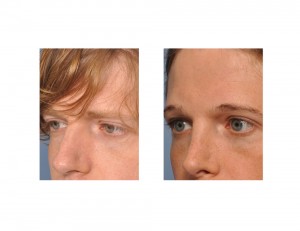Facial feminization surgery (FFS) in the transgender patient has come a long way in the past two decades. As societal and political changes have occurred, greater patient acceptance and awareness of the need for such external physical changes has become mainstream procedures for those plastic surgeons experienced in doing them. With roughly a 1/4% to 1/2% of the population being transexual, the number of patients desiring FFS is steadily increasing.
The key factor in transgender patients finding qualified and experienced plastic surgeons to address their needs is the internet. Like everything else in life, the internet has made finding FFS surgeons as easy as the click of a mouse. Having discussions by e-mails and online video chats enables patients to gather a tremendous amount of information without travel or office visit expenses. Patients can literally search amongst the available facial feminization surgeons to see whom they feel the most comfortable.
FFS surgery is a well known collection of bone and soft tissues procedures that extend from hairline lowering and forehead/brow reshaping all the way down the face to a tracheal shave reduction. What all these procedures share is that the objective is to soften or feminize one’s facial appearance…and it does that by reducing bony prominences and volumizing the overlying soft tissues. Hence fuller cheeks but a smaller jawline for example.

While almost all trasngender patients rate the forehead/eye area as one of the most important, most do not stop there. It is very common to accompany that with a rhinoplasty, jawline reshaping and tracheal shave. In older FFS patients, blepharoplasties and a facelift are often also done.
Dr. Barry Eppley
Indianapolis, Indiana


